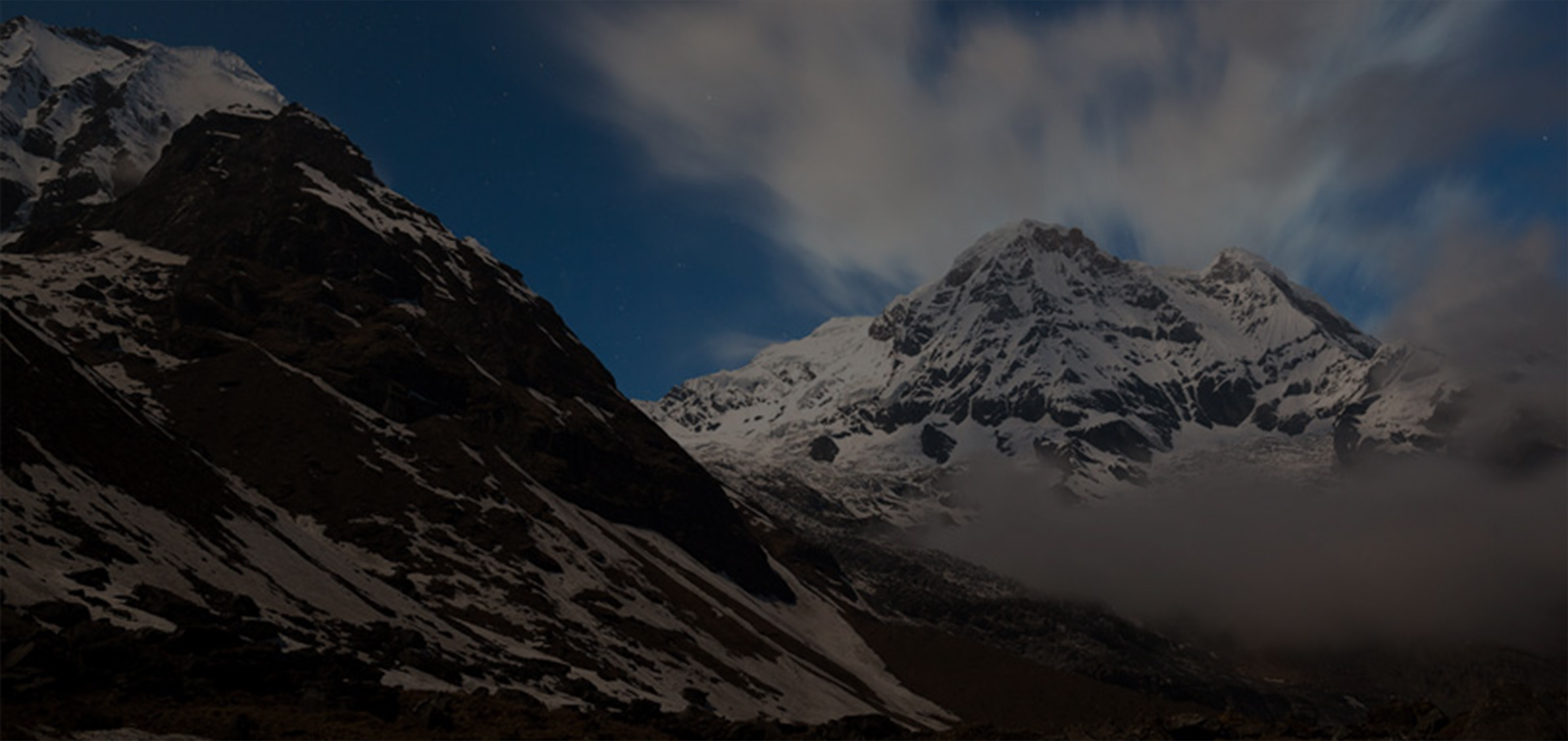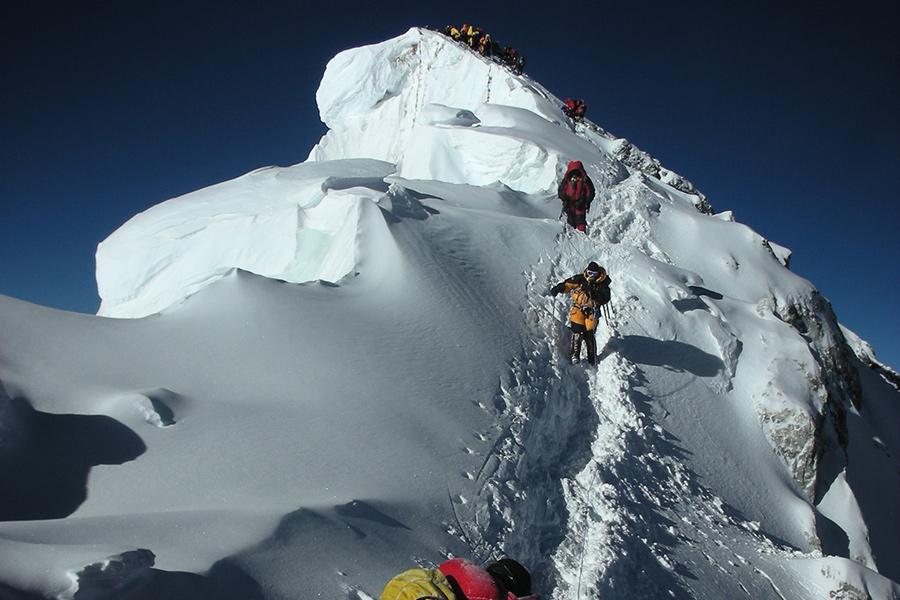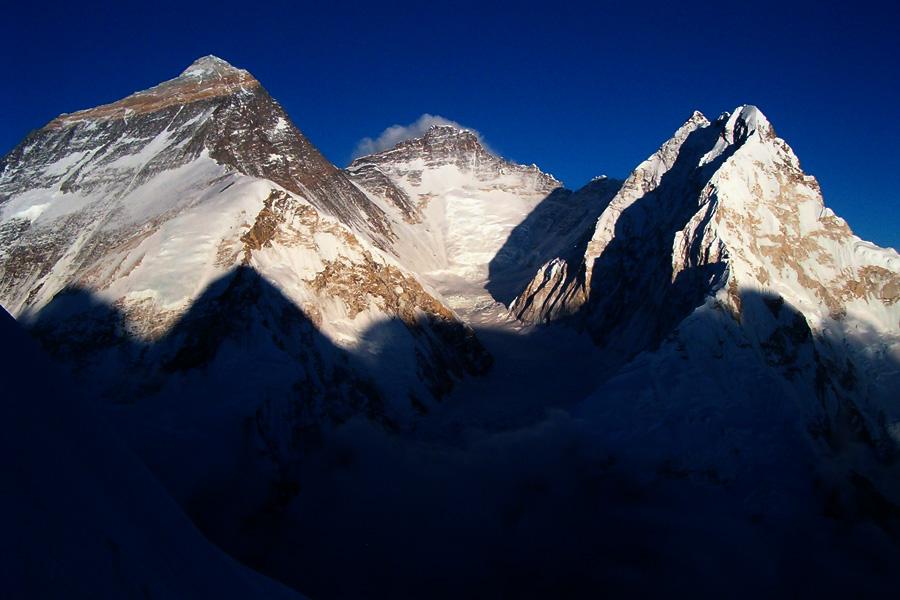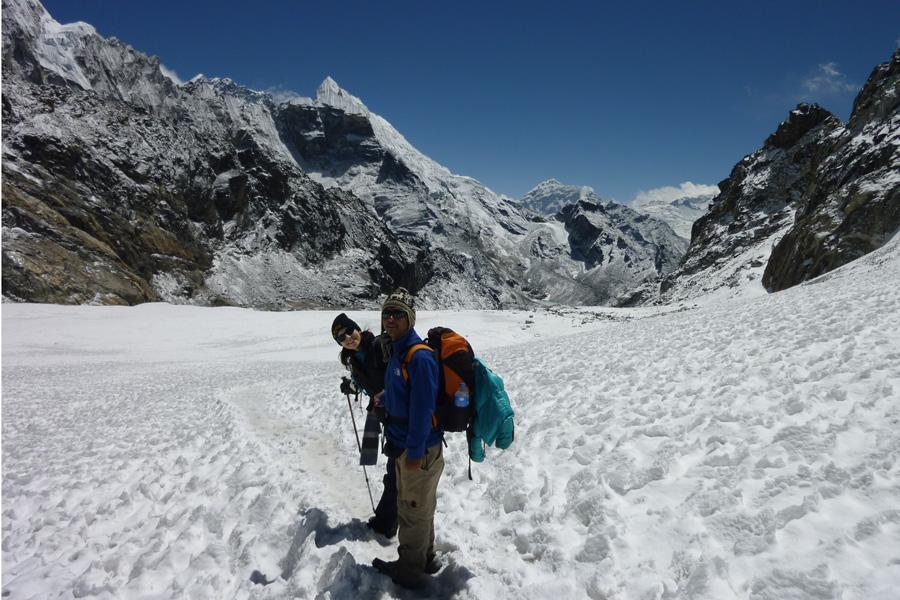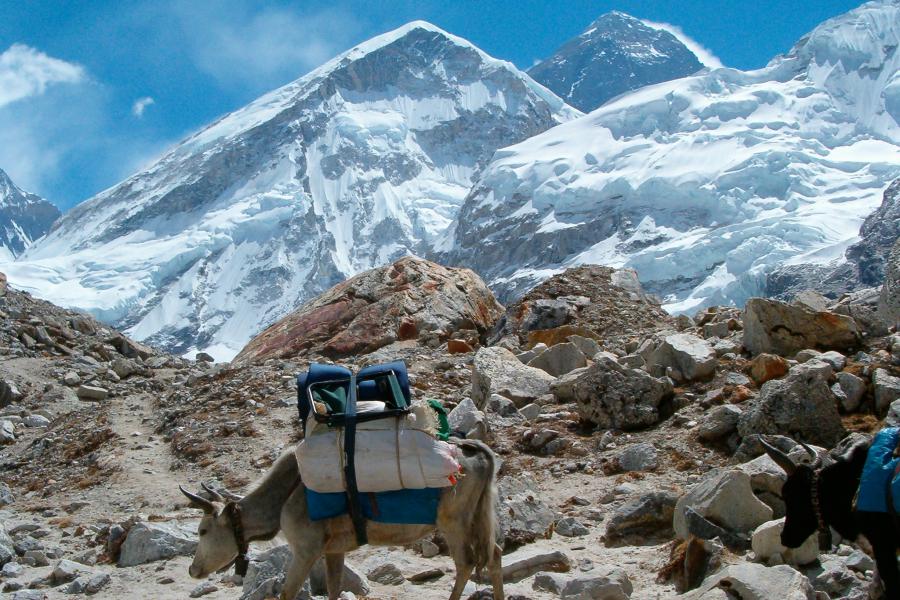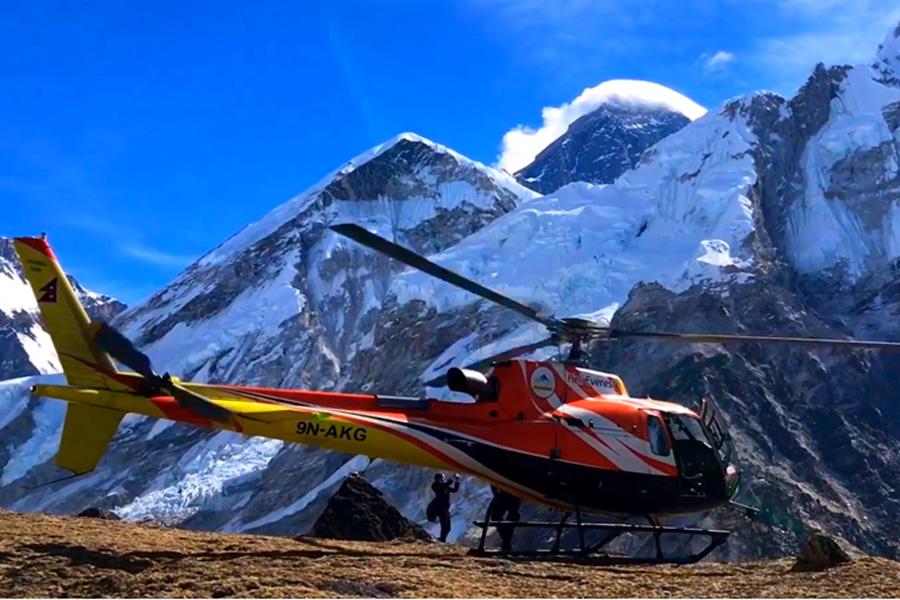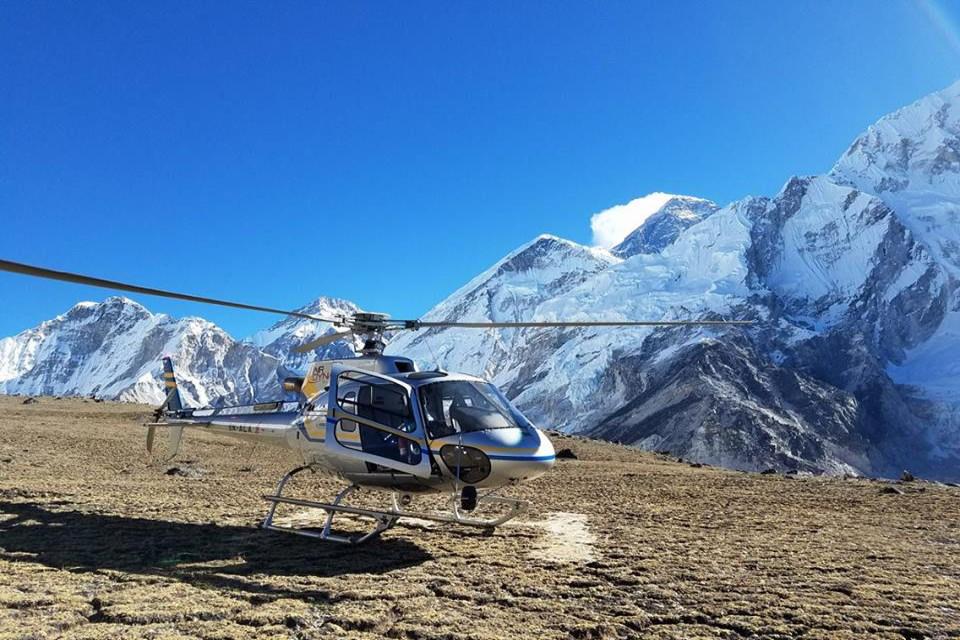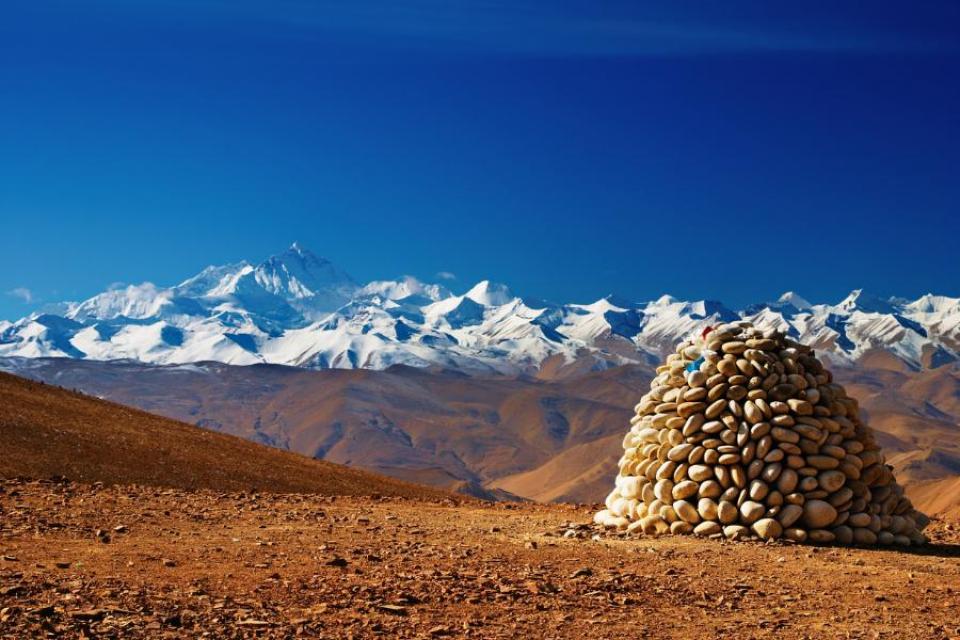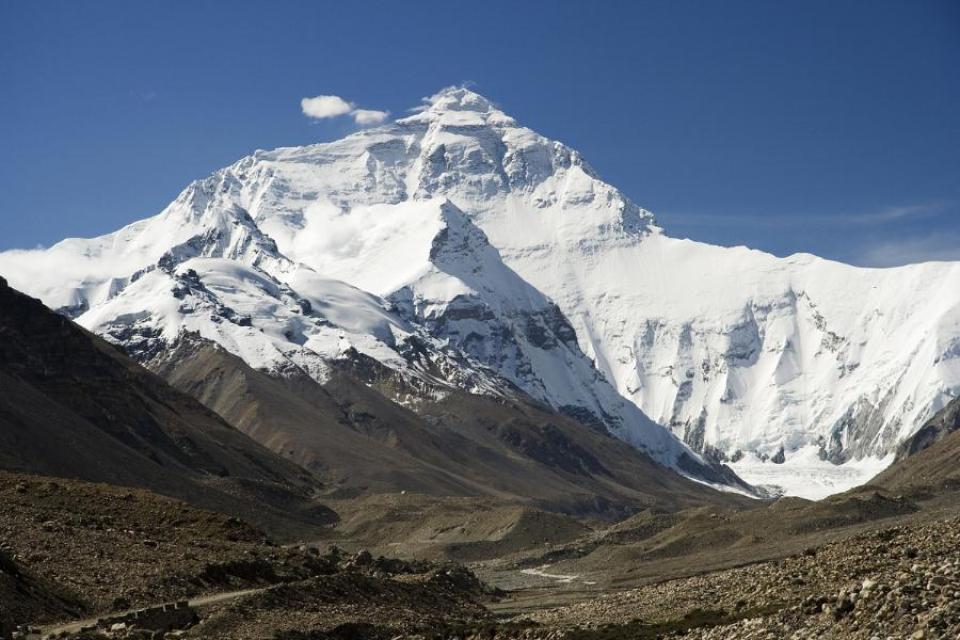Overview
The Khumbu Glacier is a stunning natural wonder located in the Khumbu region of northeastern Nepal, nestled between Mount Everest and the Lhotse-Nuptse ridge. It is the world's highest glacier, with elevations ranging from 4,900 meters (16,100 feet) at its terminus to 7,600 meters (24,900 feet) at its source. This glacier is a key feature on the trail to one of the Everest Base Camps and is renowned for the Khumbu Icefall, a large and dangerous icefall at the west end of the lower Western Cwm.
The Khumbu Icefall is a part of the glacier, which is a dramatic and constantly shifting cascade of ice. It is located just above Everest Base Camp. These natural landmarks on the Everest Base Camp trek are one of the key highlights. It offers stunning views and a close encounter with the raw power of the Himalayas.
The glacier feeds the region’s rivers, which support the ecosystem and local communities. For trekkers, it provides a sense of connection to Everest’s towering peaks and the climbers who have ventured beyond.
As trekkers embark on the Everest Base Camp trek via Khumbu Glacier, they witness stunning landscapes and experience the Sherpa people's deep connection with these sacred mountains. Along the way, trekkers also encounter the unique biodiversity in the Himalayas, where rare flora and fauna thrive in high-altitude trekking routes.
Culturally, exploring Khumbu Glacier on the Everest Base Camp trek holds spiritual value for the Sherpa people, who view the mountains and ice as sacred. The nearby Tengboche Monastery adds to its cultural significance, making the glacier a wonder and a symbol of resilience and reverence for nature.
What is the Khumbu Glacier known for?
The Khumbu Glacier is Known for being the world's highest glacier, the primary route to Mount Everest, the treacherous Khumbu Icefall, stunning mountain scenery, and its significance in studying climate change. It also holds cultural and spiritual importance for the local Sherpa communities.
Located in the Khumbu region of Nepal, this glacier serves as the location of the Everest Base Camp for climbers ascending Mount Everest from the south side. The glacier is famous for the Khumbu Icefall, a perilous section with towering ice formations and deep crevasses, making it one of the most dangerous parts of the Everest climb.
The glacier's striking scenery, surrounded by some of the world's highest peaks like Everest, Lhotse, and Nuptse, draws adventurers and nature enthusiasts alike. Additionally, the Khumbu Glacier is a visible indicator of climate change, as its retreating ice is studied by scientists to understand the broader impacts of global warming. The glacier holds cultural and spiritual significance for the local Sherpa communities, playing a vital role in their daily lives and traditions.
What is the Length of the Khumbu Glacier of Nepal?
The Khumbu Glacier in Nepal is approximately 17 kilometers (10.5 miles) long. It's one of the most iconic glaciers in the world, stretching from the Western Cwm near Mount Everest down towards the Everest Base Camp.
Khumbu Glacier Facts and Truths
- Age: The glacier is estimated to be thousands of years old, having formed during the last ice age.
-
Location: The Khumbu Glacier is located in the Khumbu region of northeastern Nepal, nestled between Mount Everest and the Lhotse-Nuptse ridge.
-
Length: The glacier is approximately 17 kilometers (10.5 miles) long.
-
Elevation: It ranges in elevation from about 4,900 meters (16,100 feet) at its terminus to 7,600 meters (24,900 feet) at its source.
-
Icefall: The glacier is known for the Khumbu Icefall, a hazardous section with large ice formations and deep crevasses, making it one of the most dangerous parts of the Everest climb.
-
Significance: It serves as the location of the Everest Base Camp, which is the starting point for many expeditions to summit Mount Everest.
-
Climate Change: The Khumbu Glacier is retreating, making it a significant indicator of climate change and its effects on high-altitude glaciers.
-
Cultural Importance: The glacier holds cultural and spiritual significance for the local Sherpa communities, playing a vital role in their daily lives and traditions.
-
Formation: The glacier is formed from snow accumulation and compaction over thousands of years, resulting in thick layers of ice.
-
Movement: Glaciers are always in motion, and the Khumbu Glacier moves downhill at a rate of about 20 to 30 centimeters (8 to 12 inches) per day.
-
Debris: The glacier's surface is covered in rocks and debris, which are called moraines. These materials are carried along by the glacier as it moves.
-
Access: The glacier is accessible via trekking routes from Lukla, and it's a popular destination for trekkers heading to Everest Base Camp.
-
Research: Scientists frequently study the Khumbu Glacier to monitor changes in ice thickness, temperature, and movement, contributing to our understanding of glacial dynamics and climate change.
Unique Geographical Features of Khumbu Glacier and Icefall
The Khumbu Glacier and Icefall are the Everest region's two most striking geographical features. Each showcases unique natural formations.
Khumbu Glacier:
The Khumbu Glacier and Khumbu Icefall are renowned for their unique geographical features, making them significant landmarks in the Everest region of Nepal. The Khumbu Glacier is one of the world’s highest and iconic glaciers. It stretches 12 kilometers from Everest’s Western Cwm to the Khumbu Valley.
The glacier is bordered by lateral and terminal moraines that consist of debris deposited by the glacier’s movement. It features towering ice cliffs, deep crevasses, and rocky moraines formed by glacial debris. Glacial meltwater creates small lakes, and as it steadily moves, up to 1 meter per day, it constantly reshapes the terrain.
Khumbu Icefall:
The Khumbu Icefall is a steep, chaotic section of the glacier near Mount Everest. It is situated just above Everest Base Camp at around 5,486 meters. It marks the start of the climbers’ ascent to higher altitudes on Everest. The icefall comprises massive ice blocks, deep crevasses, and fragile ice bridges that shift as the glacier moves.
The movement of glacial meltwater feeds small lakes, which add to the constantly changing landscape. You must navigate a steep vertical gain while crossing the icefall, as it is one of the most challenging parts of the Everest climb. Its location on a steep incline and constant motion create an ever-changing, treacherous landscape. It should be crossed early morning when the ice is more stable.
Formation and Natural Features of the Region
Khumbu Glacier
Formation:
The Khumbu Glacier was formed by the accumulation and compaction of snow over thousands of years in the high-altitude region of the Himalayas. It originated from the Western Cwm of Mount Everest. It flows downhill due to gravity, carving out the surrounding terrain.
Natural Features:
The glacier is marked by its massive ice cliffs, deep crevasses, and moraines created by debris deposited along its edges. It features glacial lakes formed by meltwater, with ice flow constantly reshaping the landscape. The glacier's surface often has a mix of clean ice and rocky debris that gives it a rugged, dynamic appearance.
Khumbu Icefall:
Formation:
The Khumbu Icefall is a section of the glacier-formed as the ice flows over a steep drop near Everest Base Camp. The sudden change in gradient causes the ice to crack, creating large crevasses and breaking into huge, unstable blocks called seracs.
Natural Features:
The icefall is characterized by its steep slope, constantly shifting seracs, deep crevasses, and natural ice bridges. These features are in constant motion due to the glacier's movement and melting processes, making it one of the Everest region's most hazardous and dynamic parts.
The Khumbu Glacier and Icefall are constantly evolving natural features. Their features are shaped by the slow but steady movement of ice over thousands of years. The glacier’s formation and features, such as ice cliffs, crevasses, and moraines, tell the story of its long journey from the high peaks of Mount Everest to the valley. Meanwhile, the Icefall’s dramatic, shifting ice blocks and treacherous crevasses represent the dynamic and dangerous nature of the glacier as it flows over steep terrain.
Adventure and Challenges of Trekking to the Khumbu Glacier
While trekking to Everest Base Camp, you’ll face challenges like high altitude, steep paths, and unpredictable weather. However, you’ll also experience stunning mountain views and learn about the local Sherpa culture. Here are some of the challenges and adventures:
- Risk of falling: The cliffs are steep, paths are covered in ice, and deep crevasses increase the risk of slipping or falling, especially in the Khumbu Icefall and higher altitudes.
- Lack of Oxygen: As you climb higher, the air becomes thinner, which makes breathing harder and increases fatigue, especially for those who aren’t acclimatized.
- Physical Injury: The rugged terrain increases the chances of sprains, twisted ankles, or other injuries that can slow progress.
- Difficult Terrain: The paths can be rocky, uneven, and muddy, which makes it difficult to maintain a steady pace. Some sections may also be prone to landslides.
- Altitude Sickness: The high elevation can lead to altitude sickness, which causes headaches, nausea, dizziness, and fatigue. Acclimatization is key to preventing this.
- Unpredictable Weather: Weather can change rapidly, with storms or snowfalls disrupting trekking plans and making paths slippery.
- Physical Fatigue: The rugged terrain and steep ascents require physical stamina. Long hours of trekking can lead to exhaustion, especially for those unaccustomed to the conditions.
- Cold Weather: The temperatures in the Khumbu region can drop drastically, especially at night. Trekkers must be prepared with proper clothing to stay warm.
Cultural and Spiritual Significance to the Region
Khumbu Glacier
Sacred Landscape:
The Khumbu Glacier is seen as a spiritual boundary by the Sherpa people. It lies near several sacred peaks, including Mount Everest (Sagarmatha) and Lhotse, which are revered in Sherpa culture and Buddhism.
Pilgrimage and Rituals:
Many trekkers and climbers visit the glacier to pay respect to the mountain gods. The glacier’s path is often included in Buddhist rituals, as the Sherpa people believe the region to be spiritually powerful and connected to their ancestors.
Connection to the Himalayas:
The glacier is a central feature of the Sherpa’s connection to the mountains, which they consider the home of deities and spirits.
Khumbu Icefall
Sacred Crossroads:
The Khumbu Icefall is located at the base of Mount Everest. It is a site of great reverence. It is considered a spiritual gateway, as climbers and trekkers pass through it on their way to Everest, considered a divine place.
Buddhist Influence:
Buddhist prayers and prayer flags are often seen along the trails near the icefall. These symbols symbolize blessings and protection from the mountain's dangers. Sherpas traditionally believe that their ancestors’ spirits reside in these sacred areas.
Symbol of Resilience:
For many Sherpas, the Icefall represents the resilience and strength of the human spirit. It is one of the Everest journey's most challenging and perilous parts.
Impact of Climate Change on Khumbu Glacier and Icefall
The climate change effects on the Khumbu Glacier and Icefall are evident as rising temperatures contribute to the glacial retreat and the formation of glacial meltwater lakes. This melting of Khumbu Glacier and Icefall makes the terrain more dangerous for climbers and makes it harder to navigate safely.
Here are some impacts of climate change on the Khumbu Glacier and Icefall:
1. Khumbu Glacier:
- Glacial Retreat: The glacier is melting and shrinking, moving backward.
- Loss of Ice: It is losing ice mass due to rising temperatures.
- Formation of Glacial Lakes: Melting creates large lakes, which can be dangerous.
- Water Supply Threat: The glacier’s retreat affects local water sources for people and animals.
2. Khumbu Icefall:
- Increased Danger: The icefall becomes more unstable, with cracks and falling ice.
- Harder to Cross: Climbers face more risks when passing through.
- Melting Ice: The melting ice changes the structure and flow of the icefall.
3. Local Impacts:
- Flood Risks: Melting ice and lakes can cause floods that threaten villages.
- Ecosystem Changes: The environment changes affect local plants and animals.
- Cultural Impact: The shrinking glacier affects the culture and traditions of local Sherpas.
- Mountaineering Risks: Mountaineers face more dangerous conditions, which affects tourism.
Trekking Experience to Natural Wonders of the Everest
Khumbu Glacier Trekking Experience:
- Starting Point: The Khumbu Glacier trek begins with a flight to Lukla and follows a well-trodden path that takes trekkers through the picturesque Sherpa villages of Namche Bazaar, Tengboche, and Dingboche.
- Scenic Views: This trek offers stunning views of surrounding peaks such as Mount Everest, Lhotse, Ama Dablam, and others. This trek provides incredible panoramas of the glacier itself as it moves down from Everest.
- Terrain: The glacier area is rugged, with rocky moraine fields and icy stretches. This trek involves walking over the glacier’s lateral moraines, which are piles of debris left behind by the glacier’s movement.
- Altitude: This trek involves gaining altitude, so you must be mindful of altitude sickness. Most trekkers go through acclimatization stops, like Namche Bazaar.
- Cultural Interaction: On the way to the glacier, trekkers pass through Sherpa villages, where they can experience local culture, traditions, and the Buddhist religion.
Khumbu Icefall Trekking Experience:
- Dangerous Terrain: The Khumbu Icefall is a dangerous section of the Everest climb. It is often part of mountaineers’ routes to the summit.
- Impressive Ice Formations: The icefall comprises towering ice blocks and deep crevasses. Its constantly shifting nature makes it beautiful and dangerous.
- Risk: Because of the glacier’s instability and crevasses, trekkers generally do not go directly through the Icefall but can witness the dangers and challenges climbers face.
Conservation Efforts
Conservation efforts for the Khumbu Glacier and Khumbu Icefall are important to protect the environment, local communities, and mountaineers. Here are some conservation efforts:
- Sustainable Tourism: Eco-friendly trekking is in practice which minimizes the environmental footprint of trekking. The government has introduced regulations to control the number of trekkers and climbers to prevent overcrowding and reduce environmental degradation in the region.
- Protection of Local Ecosystems: Efforts are being made to protect the biodiversity of the Khumbu region to preserve the unique alpine ecosystem. This region has programs to conserve forests around the glacier and icefall, which help stabilize the soil and prevent erosion.
- Community Involvement and Awareness: the local Sherpa community is involved in environmental conservation efforts. There is an emphasis on educating them about sustainable practices and climate change.
- Waste Management: Mountaineering groups and the government have organized clean-up initiatives to remove trash, human waste, and abandoned equipment from Everest Base Camp and the surrounding Glacier areas.
- Monitoring and Research: Climate research is done by scientists and monitors the glacier’s retreat and icefall stability to understand climate change's effects and predict future risks. Agencies track the growth of glacial lakes formed by melting ice to assess flooding risks and the broader impacts on surrounding communities. ??
Photography and Visual Appeal
The Khumbu Glacier is a stunning sight for photographers, with its vast, blue-tinged ice sheets and deep crevasses set against the towering peak of the Himalayas. The glacier’s beauty shines especially during sunrise or sunset when the soft light highlights the texture and shadows on the ice. The glacier’s changing nature makes it a captivating subject, showing its immense beauty and the impacts of climate change.
The Khumbu Icefall offers dramatic and striking visuals, with its towering ice blocks, jagged seracs, and deep crevasses creating a maze of frozen obstacles. Early morning or late afternoon light makes the ice glow.
Climbers navigate this dangerous terrain and provide a sense of scale and adventure, making the icefall even more impressive. The constantly shifting ice and the human effort to cross it make the Khumbu Icefall a powerful and visually captivating scene for photographers.
Conclusion
The Khumbu Glacier and Khumbu Icefall are natural wonders that define the Everest Base camp trek. It also stands as a breathtaking symbol of the beauty of the Himalayas. On this journey, the trekkers are greeted with stunning views of vast ice sheets, towering cliffs, and dramatic icefalls.
It offers a true connection to the raw beauty of nature. Beyond their visual appeal, these landmarks hold deep cultural and spiritual significance for the Sherpa people. These landmarks link them to sacred peaks surrounding Mount Everest. However, the effects of climate change are reshaping these natural wonders, which makes their prevention even more crucial.
As you explore these awe-inspiring features, it’s vital to approach them with respect and a commitment to sustainable practices. Similarly, these practices ensure that these incredible landscapes inspire future adventurers and trekkers.
Author: Samiksha Kalyan Tharu
Date: 11th March, 2025
Related Trip


